It is hard to imagine a government official stopping Daniel Day-Lewis on Oscar night, following the actor down the red carpet, asking a series of questions about his acting and filmmaking credentials, and telling him to change outfits or withdraw from the contest.
The food service industry, however, is a very different stage, and Brooklyn food vendors like Marcos Lainez answer to public health officials as a part of everyday business. During this year’s Vendy Awards, an annual cooking competition billed as “the Oscars of street food,” a cohort of inspectors from the New York Department of Health and Mental Hygiene arrived just after doors opened to conduct full inspections of every nominated business.
Lainez is a co-owner of El Olomega, a street food business that specializes in the Salvadoran-style pupusa (a thick, griddled corn cake). Because the temperature of his family’s pupusa filling didn’t have enough time between morning prep and afternoon service to fall below 45 degrees Fahrenheit, inspectors gave him a ticket and told him to throw out the entire batch. Knowing the loss would take his business out of the competition, he negotiated a compromise involving ice cubes and quick thinking.
The event organizers had expected only a couple of officials to approve conditions of the space. A dozen inspectors arrived, ready to run through their entire routine for every vendor on site. The vendors hoped that inspections might be resolved promptly, freeing them to cook for the competition and dole out free food to attendees. The inspectors, though, stuck around for the entirety of the event, drifting through the proceedings and interjecting themselves into various operations. Rather than issue a handful of tickets and move on, the Department of Health put the entire event under a magnifying glass for six hours.
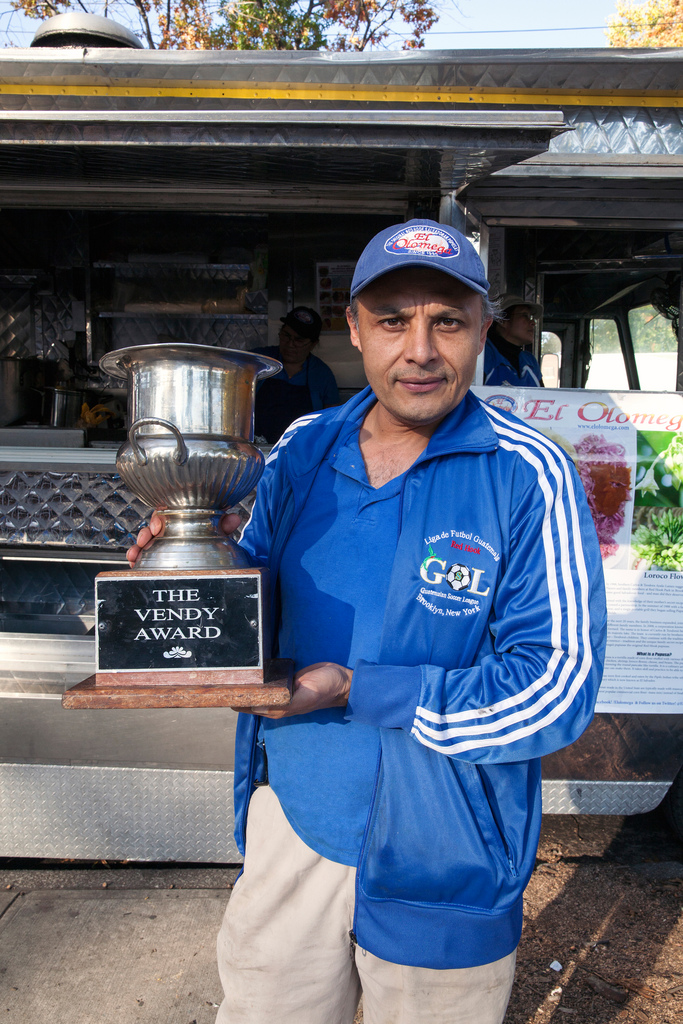
El Olomega went on to win this year’s Vendy Cup, the highest honor of the event. The business also took home two Department of Health citations, including a ticket for vending outside of its permitted concessions space at the Red Hook Recreation Area in Brooklyn. On the one day that street cooks are glamorized like celebrity chefs, Lainez was handed a court summons simply for showing up.
“It’s the first time that’s happened,” noted Sean Basinski, director of Street Vendor Project, a nonprofit group that first staged the Vendys in 2005. The event, which places carts and trucks on the radar of a city trumpeted for its wealth of brick-and-mortar restaurants, attempts to bring street food into mainstream dining culture. The Vendys now take place in Philadelphia, Los Angeles, New Orleans, and Chicago, presenting streetside fare ranging from traditional Mexican tacos to organic vegan pastries. Their guest list is a dining demographic increasingly interested in an enterprise once broadly dismissed as unhygienic and pedestrian.
“It was a slap in the face in lots of ways to our organization and what we’re trying to do — and to this one day, which celebrates the very best vendors,” Basinski said. “To have them there, hassling, is symbolically very powerful.”
Tension between city regulators and street food vendors is a necessary part of the tradeoff between public health and private enterprise, but the case of El Olomega and the Red Hook food vendors reveals a double standard in law enforcement. In Red Hook, the marketplace that local vendors have worked for decades to build was stifled just as its spirit spread through similar markets elsewhere in New York. While food events like Smorgasburg and the Hester Street Fair have risen to prominence by bringing Red Hook’s outdoor dining experience to a broader demographic, a labyrinth of regulation has made it extremely difficult for the vendors in Red Hook to serve anybody. The contradiction goes beyond ticketing an award-winning vendor for cooking outside the lines of his permit. The very notion of a permit may represent an entirely different set of rights, depending on where it’s being used and who’s on patrol.
The first vendor to make a living at the Red Hook ball fields opened for business at the edge of the park in 1974, hoping to make some cash from soccer players and spectators drawn in by their weekend games. She was soon joined by others, part-time businesses run by families who, with the aid of portable grills, makeshift tents, and picnic tables for their patrons, brought the atmosphere of a bustling, open-air, Latin American mercado to the ball fields. In tandem with Brooklyn’s Guatemala Soccer League, the vendors magnetized an immigrant community whose members came to New York not just from Guatemala but also from El Salvador, Honduras, Mexico, the Dominican Republic, and other Latin American countries.
The park was a seasonal hub, springing to life during the warm-weather months and closing down during the off-season. Even through the 1990s, when Red Hook had a reputation as one of the most dangerous neighborhoods in the city, the union of fútbol and food flourished. At one point, the number of teams in the Guatemala league alone surpassed 40, while a bevy of vendors lined the fences along Bay Street and Clinton Street. Over time, Red Hook became known throughout the boroughs as a dining destination. A day spent watching Spanish-language soccer in the company of grilled corn wasn’t as iconic an act as noshing on herring at Russ and Daughters or dipping your toes beneath the Unisphere, but the experience was indelibly Brooklyn.
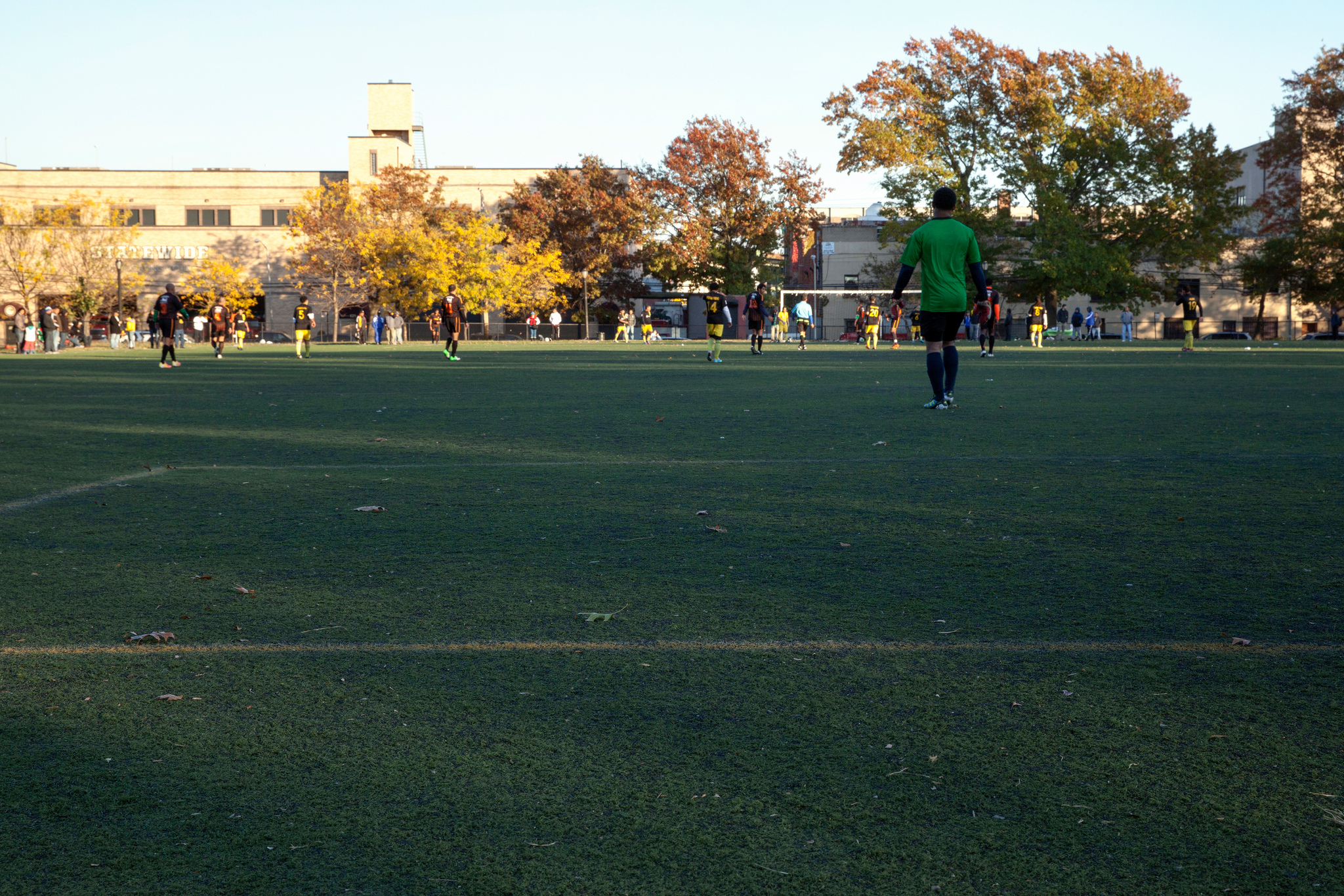
As Manhattan’s economic rejuvenation began spreading to the outer boroughs, Red Hook remained largely unaffected. City blocks between the East River and the Gowanus Bay seemed immune to development makeovers, and IKEA — which now claims 346,000 square feet on Bay Street — was a distant dream. With basic permit requirements and little foot traffic in comparison to Carroll Gardens and Cobble Hill, the Red Hook food vendors were left to their own devices. Marcos Lainez’s parents were able to start selling pupusas on weekends, building the business that would eclipse their past work as dishwashers and home attendants.
As the vendors garnered more and more attention from food bloggers and the mainstream press, visits from the Department of Health became more frequent. The vendors’ operating costs expanded to include a docket of citations. Tensions came to a head in 2007, when the Department of Health attempted a mid-season shutdown of vending operations.
“They would come down every week, which to this day is unheard of,” remembers Fabian Perez, whose Vendy Award–winning mother has served Mexican food at the ball fields since 1988.
“I still don’t know why. I kid you not, they would come down three weeks out of the month, both days. They were on us every week. They weren’t giving us tickets, but they were telling us that we had to have a bathroom nearby, that we had to have portable wash stations, that we had to have this and had to have that.”
Even the strictest enforcement regime was not enough to close business at the ball fields, anchored by a core group of duly licensed and well-organized families. Focused mostly on boilerplate sanitation requirements and the presence of illegally operating vendors amid the crowded fields, the inspectors were not acting unconventionally in the scope of their concerns — even if their actions were heavy-handed.
In the greater scheme of New York life, street vendors of all stripes have been accustomed to this selectively enforced web of regulations since the first time a New Yorker took the words “dirty water dog” at face value. The true struggle of the Red Hook vendors began when city regulations replaced seasonal permits with an all-or-nothing bid for survival.
Street food in New York has a history of keeping communities of vendors on the edge. Typically summed up as a game of cat-and-mouse, the life of a New York street vendor is more like a slice of a stale, layered bureaucracy cake.
Regulation of the Red Hook ball fields offers one glimpse into the lopsided tensions between vendor and government, in which a kaleidoscope of city agencies — including the Department of Health, the Police Department, the Environmental Control Board, the Department of Consumer Affairs, and the Department of Parks and Recreation — are tasked with creating, interpreting, and enforcing a convoluted set of codes tied to the people, places, and practices of outdoor cooking.
The base requirement for a food vendor is a food handler’s license, which requires the licensee to take a class, pass a test, and pay a fee of $20 to $125. The license is assigned at the individual level and awarded for ten years but does not constitute authorization to actually vend — that is, to sell food in a public space.
Vending permits cover a variety of situations, scopes, and scales. The most heatedly debated permits apply to carts and trucks. During the 1980s, they were capped at a maximum regular distribution of 3,000 permits. Over the next 30 years, this system came to support a massive black market for legality, in which permit owners become mobile landlords who use a loophole in the law to effectively sublet their rights.
Verifiable figures on these arrangements are lacking, but the New York Times reported recently that in some cases the black market markup can be as high as 5,000 percent. In a separate column, Adam Davidson, a journalist investigating these ins and outs for the Times, summed up New York’s street vending economy as “bureaucratic inertia,” drawing a comparison to “corrupt countries...like Iraq and Haiti, where illogical and arbitrarily enforced rules create the wrong set of incentives.”
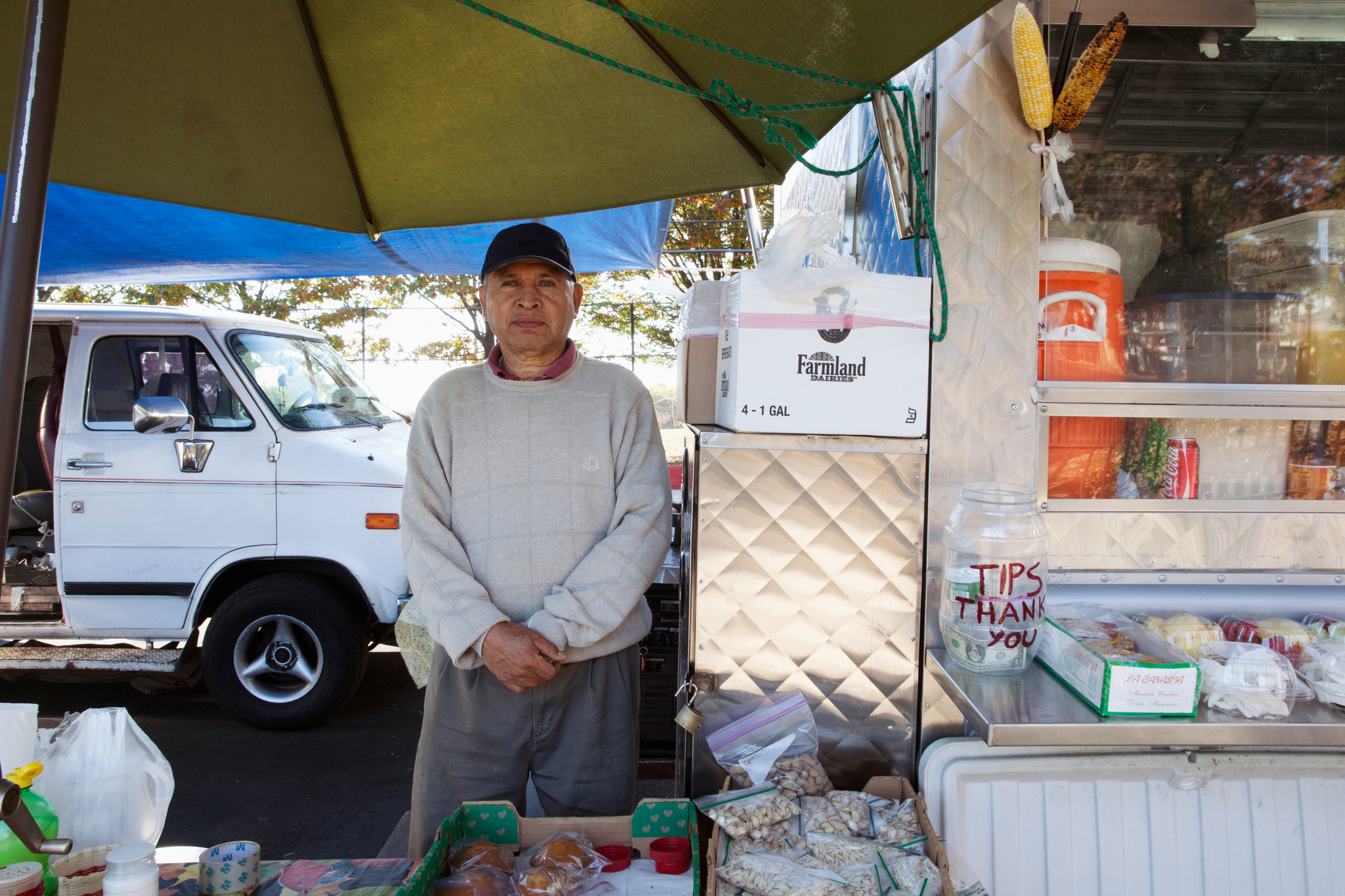
The Parks Department’s request-for-bids program represents the other side of the coin. Transparent in their distribution, permits allotted through RFBs award narrowly defined, location-based rights to the highest bidder. Whereas black-market citywide permits can fetch up to $10,000 for a year of legal access, vendors have bid nearly $300,000 on legal rights to sell hot dogs in Central Park for the same period of time.
In addition to a license to prepare food and permits to sell it, visits from health inspectors and police officers can add thousands in fines to the cost of doing business. Examples of ticketable offenses include being too close to a subway station, not having every required document on hand, leaving an ice scoop inside a bucket of ice, and using a non-sanctioned washcloth. Standards verified during a regular commissary check-up can later be cited during an on-site inspection, and the exact routine of inspections often depends on the mood of whoever is doing the inspecting. Any charge can be dismissed by a judge, but it takes a savvy vendor to understand the offense, show up to the court appointment, and make her case.
“That’s the problem with our food,” Marcos Lainez points out. While other vendors tend to turn food from frozen or refrigerated states to fully cooked in a matter of minutes, El Olomega’s pupusa filling is heated and cooled over several hours and then cooked again, inside the pupusa, just before service. The sight of cooked food being left out and used as a central ingredient consistently draws questions from inspectors, just as it did on the day of the Vendys.
“This is different. They’re not used to it; this is not their culture. It would be nice if, I guess, they go through a training where they get exposed to all these different types of food that we cook, because it’s not the same.”
Because every day brings with it higher costs and a potentially new spin on the law, the state of street food in New York is beyond inertia. The city’s fractured part in this saga plays out like a crude attempt to go by the book — except there are many different books, each in a different language, and all of them are being thrown at vendors more often than they are actually read.
Cesar Fuentes, whose family has served Salvadoran fare in Red Hook since 1999, remembers the 2007 phone call from the Parks Department that upended over 30 years of success built on blood, sweat, and masa.
“At the very beginning, the real word to us was, ‘That’s it, your market is no longer going to be working. I’m sorry. You only have ten more days to operate, and that’s it.’”
Permission to do business at the ball fields became highly uncertain, as vendors lurched from weekend to weekend. The Department of Health inspectors sent to Red Hook offered little explanation when making their rounds. Though some inspectors developed friendly relationships with the vendors, others earned a reputation for behaving like regulatory robots. More ultimatums were issued. Permits expired, were extended, and expired again as summer turned to fall.
Fuentes, who had spent six years organizing vendors as executive director of their non-profit collective, gave the vendors a voice and a mission. Since 2001, he had helped them manage the park and promote their food to the rest of New York, preparing for the inevitable influx of higher-income renters. His knack for public relations and position of influence with the vendors allowed him to stave off edicts from the Department of Health, then hammer out a unified response to its demands. Mounting a pupusa-powered pulpit, he rallied a cross section of journalists, chefs, activists, politicians, and patrons to support the vendors in the most public battle over street food since Mayor Rudy Giuliani proposed banning sidewalk vendors from 144 city blocks in 1998.
The direction of a skilled executive like Fuentes proved indispensible when the Parks Department made its next move. Aiming to attract more sustained investments in the Red Hook Recreation Area, the Department capped the tumultuous season by announcing a new program for food service in Red Hook: a concessionaire’s permit that would cover the entirety of one ball field for six years.
At first glance, the introduction of longer-term permits for vending operations seems like a sensible means of pre-empting turf disputes and illegal activities on public property. The details reveal a much tougher bargain in several respects, the first of which is the awarding of concession rights through a request for proposals.
During an RFP, the Parks Department offers a group permit to the winner of an open applications process. The department markets each permit as a “concession opportunity,” identifying open locations on its web site and tailoring proposal guidelines to the needs it seeks to fulfill. A deadline is listed, and once all proposals are in, the department selects one group to receive the permit. The criteria for this selection are not explicitly financial, but when the Red Hook ball fields were opened for a six-year term, the stakes for vendors jumped from “ante up” to “all in.”
Fuentes compares the pressures of the new process to the perennial rise of rents across New York: “You have a tenant who’s been living [in] the same apartment for years and years and years, and here comes the landlord and says, all of a sudden, ‘Hey, you know what? You need to leave, because I think we may have a higher bidder who can pay more than you can.’
“Suddenly, when your lease is up and expired, and you’re not the only one that’s up for renewal, but it’s actually open to the public, then it brings a certain sense of fear. It brings a certain sense that what’s been there, what the group has helped develop and create and form, is at risk of being lost.”
After months of controversy — including a flurry of news reports, a soapbox speech by U.S. Senator Chuck Schumer, and a series of meetings with state and local officials — the Red Hook vendors ended their 2007 season and began working on their proposal. As a concession to concessions, the Parks Department adjusted its request specifications to play down the importance of permit fees and play up the need for an “ethnic market.” A public statement from Parks Commissioner Adrian Benepe stressed a desire to give “selected vendors the permanence and regularity that they deserve.”
Still, the RFP requirements were more demanding than anything the vendors had ever faced. While the city kept fees relatively low, the request formalized other burdens, including assumption of park maintenance costs and documented proof of “financial capability.” The Red Hook Vendors Association paid the Parks Department $10,500 for the first year of their six-year term, representing all vendors on the premises and agreeing to a 5 percent annual increase thereafter. The vendors also agreed to a requirement that all food vendors operate in “mobile food units”; in other words, the cooks who had made a name for themselves by building an open-air food market would have to acquire food trucks or leave the ball fields.
This contradiction — encouraging permanence and regularity while demanding that tables be replaced by trucks and carts — was never formally justified by the Parks Department. When asked about the motivations for this rule, the department replied, “All of our RFPs states that concessionaires must comply with Department of Health and Mental Hygiene regulations, and in this case DOHMH determined that mobile food units were required.” The full extent of collaboration between the two regulatory agencies was not described.
Asked to describe the benefits of implementing the RFP process across the city, the department answered, “The RFP process allows us to solicit proposals and evaluate them based on the criteria listed in the RFP.”
Even after factoring in the savings achieved through resourceful searches and food industry connections, the capital requirements for converting a table-and-grill business to a food truck business averaged $40,000 per vendor. In the face of such demands, all but thirteen of the businesses at Red Hook closed down or moved elsewhere. Those who remained pulled together the needed funds from savings, friends, family, and loans, many of them going into debt rather than lose the space they’d spent so much time creating. The Perez family moved their business into a food truck they picked up in New Jersey. El Olomega bought a used fast food concessions truck in Ohio, keeping the hamburgers-and-hot-dogs paint job while retrofitting the interior for Salvadoran cooking. The Lainez family is still paying for their purchase on layaway.
After months of retooling, delay, and negotiation, the first Red Hook huarache of 2008 was served on July 19 — three months later than usual. A bright yellow banner declaring, “We’re Back!” celebrated the return, but the change from bustling market to a slower-paced, truck-lined street was stark. As the vendors settled into a more sparse arrangement, they continued struggling with a developing neighborhood and a soccer league in decline. Street food, they learned, would not be enough to keep their community intact.
The food enthusiasts of Brooklyn might have a hard time seeing the chips stack up precisely because they are so inconsistently placed. Despite the well-documented difficulties of the Red Hook Food Vendors, outdoor dining has thrived in other parts of the city. Food trucks and carts have multiplied despite the ragged contours of the industry. At the South Street Seaport, the New Amsterdam Market has become a fixture as Manhattan’s own firebrand for historical market preservation. On the Lower East Side, the Hester Street Fair showcases a variety of adventurous dining options every Saturday. And Smorgasburg, the food-focused outgrowth of the popular Brooklyn Flea Market, supports about 150 vendors in two Brooklyn locations.
Smorgasburg, perhaps the most lauded outdoor market in the city, opened not long after the Red Hook’s mercado-style operation was regulated out of existence. Curating a mixture of regular and temporary vendors that serve a dizzying spread of cuisines, the enormous outdoor food bazaar is bound to no pre-existing community, tying its brand instead to a shared sense of culinary adventure. The market acts as an incubator for budding restaurateurs; some vendors make big financial gains in their weekend business, while others achieve enough validation to open a brick-and-mortar restaurant. While many Smorgasburg vendors never find the success they’re looking for, the vibrant setting is an ideal place for vendors to compete and to learn, rich with like-minded cooks and a buzzing stream of potential customers.
The contrast between Red Hook and Williamsburg in 2013 could not be more stark. Why, exactly, has Smorgasburg thrived, while the Red Hook vendors are waiting for another 6-year chance to earn their living?
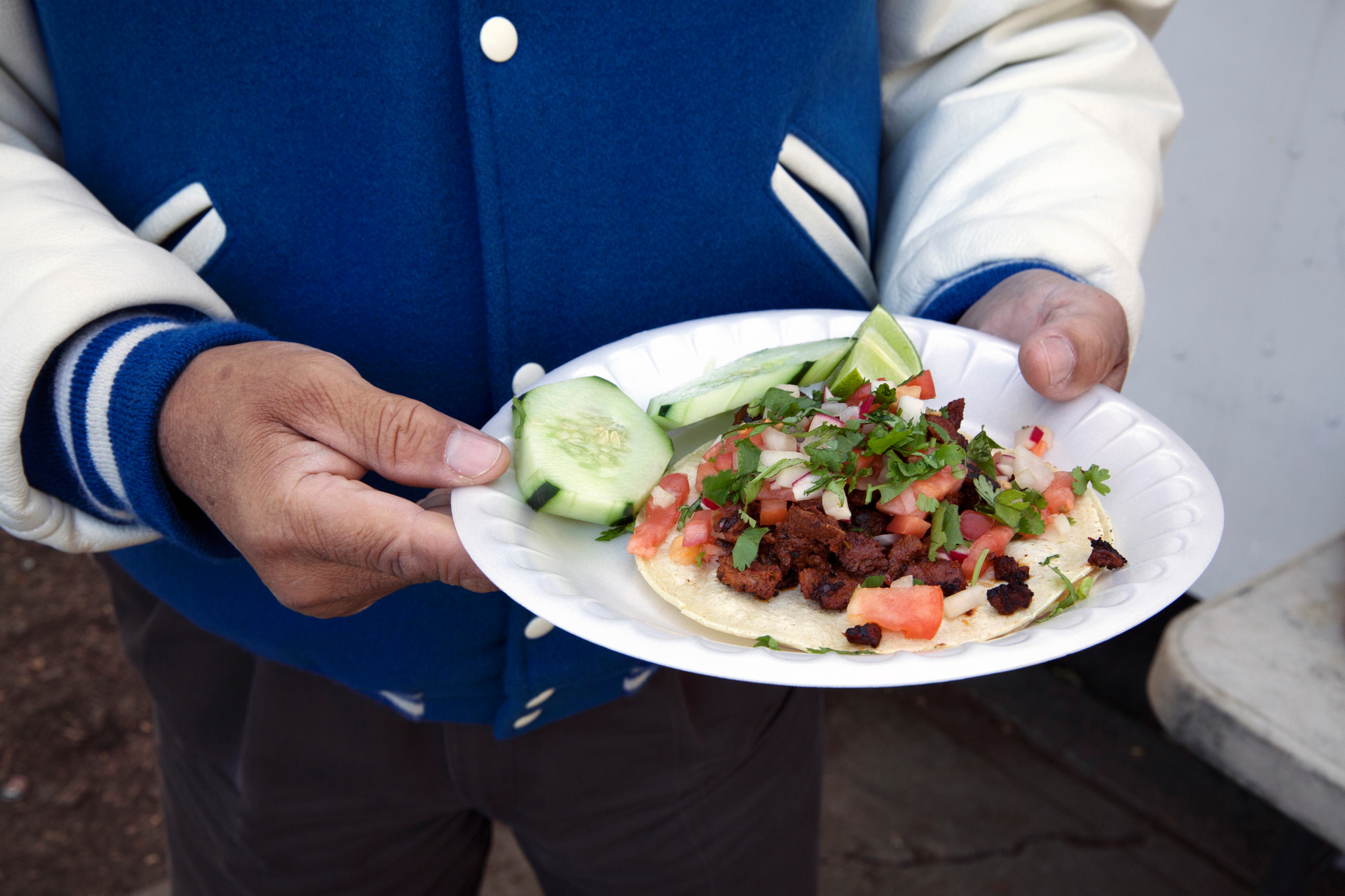
The business acumen, legal savvy, and distinct vision of Smorgasburg’s founders have certainly played a part in their achievement. Location also plays an immense role; while the ball fields, located in a far-off neighborhood known to most New Yorkers as the end of the IKEA ferry, were plagued by the long-term closure of the Smith Street F and G train stop, Smorgasburg filled out the heart of Brooklyn’s trendiest neighborhood.
A key difference, though, remains the city’s schizophrenic standards for vending. As long as the Red Hook vendors are subject to regulation by the Department of Parks & Recreation, they must abide by whatever stipulations it includes in the RFP for the Red Hook Recreation Area. Smorgasburg, which answers to the New York State Office of Parks, Recreation, & Historic Preservation, ostensibly faces none of the restrictions that are baked into the Red Hook vendors’ group permit. The State Parks Department did not respond to several requests to discuss the permit requirements that apply to outdoor vending at the East River State Park.
Just as the family of Red Hook vendors once deferred permit responsibilities to individual businesses, Smorgasburg managers lay out the requirements for each its vendors, who are directly accountable for individual food handling licenses, temporary event food vending permits, an insurance policy, and any costs for equipment. While Smorgasburg vendors are exposed to the same health inspections as every other vendor in New York, they aren’t forced to acquire food trucks to vend.
If the food truck mandate were removed, Cesar Fuentes says, the Red Hook ball fields could start to look more like Smorgasburg does now, “bringing back that Brooklyn Flea type of connection that, unfortunately, because of city regulations, we can no longer have.”
The city, he says, “will refuse any type of event that is actually set on tables and grills in the outdoors, just like we had it before. It’s not that it’s illegal. You go to the Brooklyn Flea and it’s completely legal. You go and just get a permit from the Department of Health, and it’s legal. It’s just that the bureaucracy is such that the RFP has been written in such a way that pretty much it’s either you have a food truck, or you don’t sell.”
The future of outdoor dining in New York remains an open but uncertain road. The founders of Smorgasburg, ever ambitious, have confirmed the development of a kitchen space in Crown Heights and begun exporting nouveau Brooklyn by holding a Smorgasburg pop-up market in Washington, D.C. The Red Hook Food Vendors, working through the annual lull in business just after the public pool closes down, are still waiting to find out if they’ll be permitted to return. At the end of all this, there’s still an outside chance that the piece of land they’ve sunk so many years into will be handed to another group.
On July 19, 2013, Fuentes hand-delivered over 40 pages of print and diagrams, in a manila envelope, to the Parks Department. He and his committee of business leaders had spent much of their six-year term planning for the next one, determined to reduce any chance of losing the Red Hook ball fields to nil.
The new RFP included many of the same requirements as the 2007 request. The winning concessionaire will operate in mobile food units, “for the operation of an ethnic and specialty food market at Red Hook Park.” This time, though, the entire affair went off without so much as a whimper from the media or the food-crazed public. Aside from the incident at the Vendys, health inspections have become more or less routine. The Red Hook Vendors Association, having survived one trial by legalese, were free to focus on what they wanted to do with the park, and drew from a deeper well of experience to articulate a new vision of Red Hook’s future.
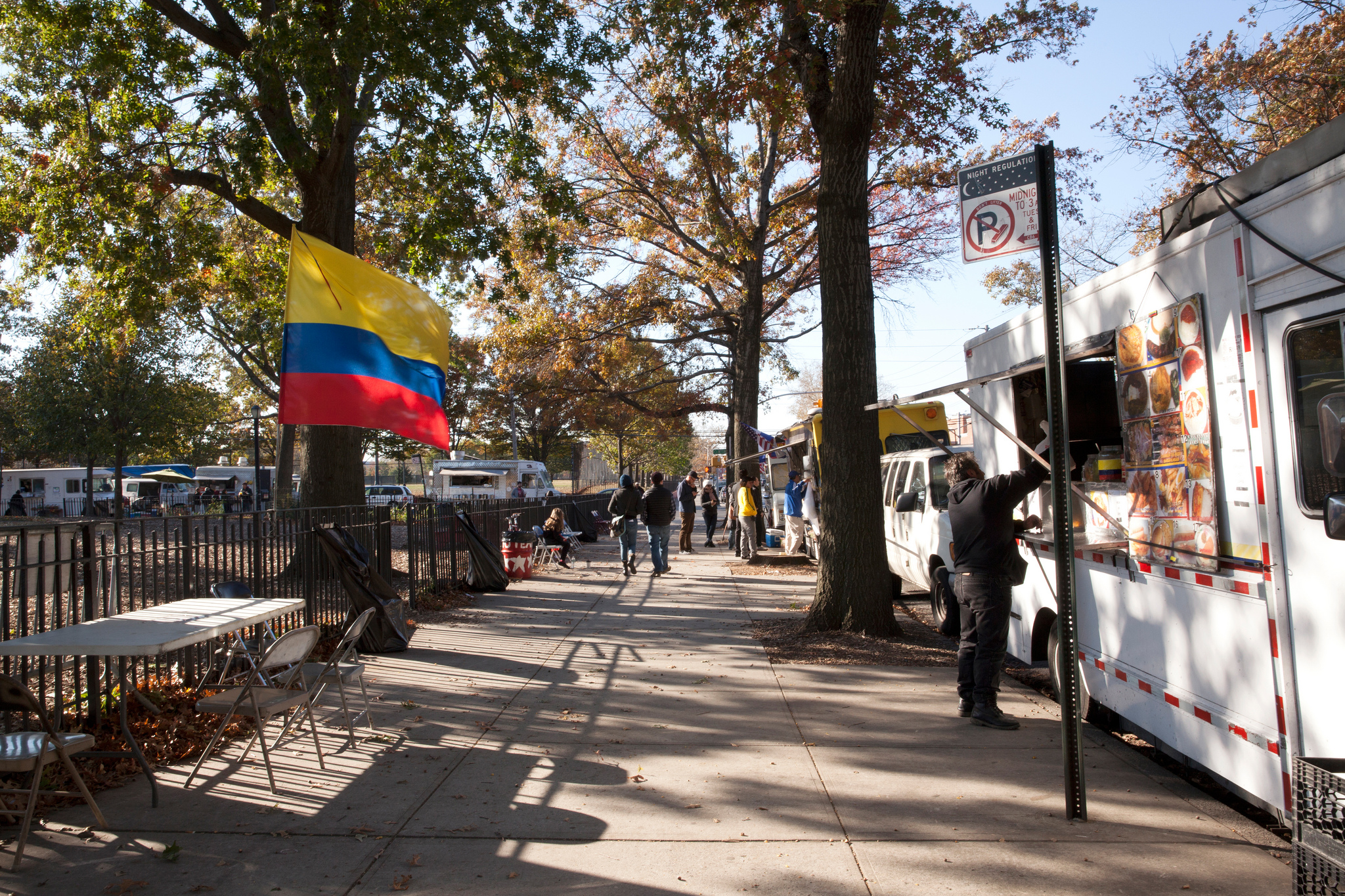
Kicking off a public architecture competition in 2008, the vendors continued reaching out to an increasingly diverse customer base for support. In 2011, they settled on Mateo Pinto’s and Carolina Cisneros’s design for “A New Marketplace for Red Hook Park.” Architecture for Humanity sponsored the winners in two successful grant proposals, enabling development of their ideas into concrete elements of the new proposal. In addition to architectural improvements, the new proposal suggests bringing a farmer’s market to the park, enabling the sale of arts and crafts, and staging more local events on the premises. The vendors signal high hopes for their place in the neighborhood, no matter who ends up being on the other side of the counter.
The vendors have also made considerable efforts to jumpstart the Guatemalan soccer league, which had steadily fallen into a state of disrepair. German Ochoa, the new vice president of the league and son of a Guatemalan food vendor, has worked with the Vendors Association to increase the league’s prize money, luring stronger teams and better players back to Red Hook. Ochoa and the league president, Marvin Strada, are also bucking the traditional nature of the ball fields, assembling a children’s league and a women’s league in a bid for long-term growth. Vigorously pursuing signups and actively planning publicity work with the vendors, Strada and Ochoa have lifted the number of 1st division teams from 14 to 20 in a matter of months.
On a recent Saturday, three generations of soccer players from across Brooklyn showed up to compete, to congregate, and to eat. The food trucks lining Bay Street were kept busy by a modest but steady stream of customers. The sizzle of pupusas on the griddle mixed with idle chatter as disposable plates hit wooden picnic tables in a quiet ritual.